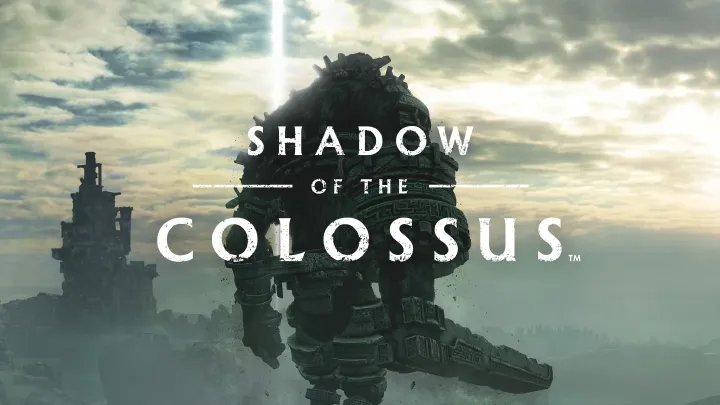Introduction
The gaming industry has always thrived on creativity and innovation. While many titles follow familiar formulas, certain games redefine how we think about interactive experiences. These titles introduce groundbreaking mechanics that reshape genres, inspire future developers, and create unforgettable moments for players. In this article, we’ll explore the top 10 games with the most innovative gameplay mechanics, analyzing their core design, how they changed the gaming landscape, and offering a critical evaluation of their impact.
1. Portal (2007) – The Power of Portals
Introduction to the Game
Developed by Valve, Portal took the gaming world by storm with its unique concept of solving puzzles using a handheld portal gun. Unlike traditional first-person shooters, the game replaced combat with logic, perspective, and creativity.
Gameplay Analysis
The central mechanic revolves around creating two interconnected portals on surfaces, allowing instant travel between them. This mechanic forces players to rethink space, momentum, and gravity in ways no other game had done before. The minimalist environment design complements the puzzles, while GLaDOS—the AI antagonist—adds layers of narrative depth.
Evaluation
Portal set a new benchmark for puzzle-based games. Its innovative mechanics inspired countless indie titles and cemented its legacy as one of the most creative experiments in game design history.

2. Shadow of the Colossus (2005) – Boss Battles as the Whole Game
Introduction to the Game
Developed by Team Ico, Shadow of the Colossus is often described as art in motion. The game strips away traditional RPG elements like dungeons and hordes of enemies, instead focusing solely on defeating massive creatures called Colossi.
Gameplay Analysis
Each Colossus is both a puzzle and a battle. Players must climb, cling, and exploit environmental cues to find weak points. Unlike conventional bosses, the Colossi themselves act as living levels that must be traversed. The mechanic of grip stamina further adds tension, forcing players to strategize their climbs carefully.
Evaluation
By making boss fights the entire experience, Shadow of the Colossus reinvented what it means to design encounters. Its influence can be seen in modern titles like Monster Hunter and Elden Ring.

3. The Legend of Zelda: Breath of the Wild (2017) – True Open-World Freedom
Introduction to the Game
Nintendo revolutionized open-world design with Breath of the Wild, offering unparalleled freedom of exploration within the Zelda franchise.
Gameplay Analysis
Key innovations include a stamina-based climbing system, interactive physics, and a chemistry engine that allows natural interactions between elements (e.g., fire spreading through grass, metal conducting electricity). Unlike other open-worlds that rely heavily on scripted missions, Breath of the Wild empowers players to create their own adventures.
Evaluation
The game redefined open-world exploration, setting a standard for player freedom that other developers continue to chase. Its mechanics blur the line between environment and gameplay, making it one of the most innovative titles of all time.

4. Journey (2012) – Silent Multiplayer Storytelling
Introduction to the Game
Developed by Thatgamecompany, Journey challenged the notion of multiplayer by removing text and voice communication, instead relying on simple sounds and visual cues.
Gameplay Analysis
Players explore a vast desert while occasionally encountering anonymous fellow travelers. The only form of interaction is a musical chime that conveys emotion and coordination. This silent companionship creates a profound sense of connection without words.
Evaluation
Journey innovated the emotional dimension of multiplayer gaming. By stripping away conventional communication, it fostered empathy and cooperation in an entirely new way.
5. Katamari Damacy (2004) – The Art of Rolling Everything
Introduction to the Game
This quirky title from Namco puts players in control of a tiny prince tasked with rolling a magical ball (the Katamari) to collect objects and rebuild the cosmos.
Gameplay Analysis
The mechanic is deceptively simple: roll up objects smaller than the Katamari to grow larger, eventually absorbing massive structures. The progression from picking up paperclips to swallowing skyscrapers delivers an addictive and surreal sense of scale.
Evaluation
Katamari’s mechanic is both playful and ingenious, demonstrating how a simple concept can evolve into endless creativity. Its influence is still visible in games that emphasize absurd, physics-driven fun.
6. Papers, Please (2013) – Bureaucracy as Gameplay
Introduction to the Game
Lucas Pope’s Papers, Please proved that even mundane tasks like stamping documents could become an immersive and morally complex experience.
Gameplay Analysis
Players assume the role of an immigration officer in a fictional totalitarian state. The central mechanic involves inspecting documents, identifying discrepancies, and making life-altering decisions. Balancing efficiency, accuracy, and personal ethics adds layers of tension rarely seen in games.
Evaluation
By transforming bureaucratic tasks into a moral puzzle, Papers, Please expanded the definition of what gameplay could be. It inspired a wave of indie games focused on everyday systems and ethical dilemmas.
7. Metal Gear Solid V: The Phantom Pain (2015) – Emergent Stealth Sandbox
Introduction to the Game
Hideo Kojima’s final entry in the Metal Gear series pushed stealth mechanics into unprecedented territory.
Gameplay Analysis
Instead of linear stealth sections, MGSV introduced a vast open-world where players could approach missions with total freedom. The mechanics of time of day, enemy AI adaptation, and the Fulton extraction system encouraged experimentation. Each mission could play out in countless ways, creating emergent narratives.
Evaluation
MGSV showcased how stealth gameplay could thrive in a sandbox setting, making it one of the most mechanically ambitious stealth games ever made.
8. Undertale (2015) – Morality and Player Choice Reimagined
Introduction to the Game
Toby Fox’s indie hit Undertale flipped the traditional RPG combat formula by giving players the option to spare or fight every enemy.
Gameplay Analysis
Combat blends bullet-hell dodging with moral decision-making. Choices matter—not just in the outcome of the story, but in how characters perceive and react to the player. This mechanic forces players to confront their own motivations.
Evaluation
By embedding morality into the core mechanics, Undertale challenged players to rethink violence in games. Its influence can be seen in countless narrative-driven titles that followed.
9. Death Stranding (2019) – The “Strand” System
Introduction to the Game
Hideo Kojima once again brought innovation with Death Stranding, a game often described as a “walking simulator” with a twist.
Gameplay Analysis
Players act as couriers in a fractured world, balancing weight distribution, managing stamina, and navigating treacherous terrain. The Strand system allows players to leave behind tools, ladders, and structures that others can use asynchronously—creating a sense of community without direct multiplayer.
Evaluation
Though divisive, Death Stranding’s mechanics redefined how traversal and connection can be central to gameplay. It’s a bold experiment that has already inspired new design philosophies.
10. Return of the Obra Dinn (2018) – Deductive Detective Work
Introduction to the Game
Another masterpiece from Lucas Pope, Return of the Obra Dinn introduced a truly unique approach to mystery-solving.
Gameplay Analysis
Players investigate a derelict ship using a magical pocket watch that reveals frozen moments of each crew member’s death. The core mechanic revolves around piecing together identities and fates through deduction rather than traditional clues.
Evaluation
This mechanic redefined detective gameplay, rewarding logical reasoning over trial-and-error. It stands as one of the most intellectually stimulating games ever created.
Conclusion
From physics-bending puzzles in Portal to the silent companionship of Journey and the moral dilemmas of Papers, Please, these ten games showcase the power of innovation in the gaming industry. Each introduced mechanics that broke conventions, challenged assumptions, and inspired future developers to think outside the box. Innovation is not just about flashy graphics or complex systems—it’s about fresh ideas that change how we play, think, and feel.
As gaming continues to evolve, these titles remain milestones of creativity, reminding us that the best mechanics are those that surprise, challenge, and resonate long after we put down the controller.

















